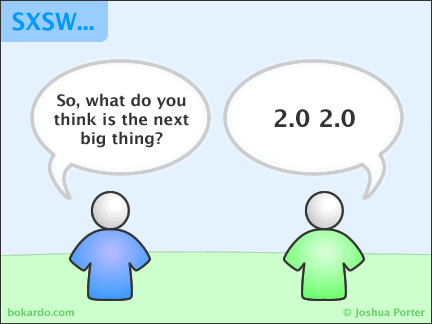
The term “management” is very misused, in my view. Long time ago, somebody told me – if you don’t know how to call it, call it “management”. So, Product Lifecycle Management :)… How we can move it forward? I have heard a lot of discussions about 2.0 trends for the last few years. It started as Web 2.0 and after moved to different areas of our life – Government 2.0, Enterprise 2.0, Library 2.0, Everything 2.0 etc… So, finally, thanks to my colleagues from Dassault Systems, we have now PLM 2.0. I had chance to talk about various aspects related to PLM 2.0 and this is my next attempt to discuss and churn again about the PLM 2.0 topic.
Management Minimized, but Not Eliminated.
I think, management is a really outdated term in the context of software. Like a combustion engine, management as a technology is largely stopped being developed. In order to realize the full potential of organization we need to focus on a process or, saying differently, on how to marshal resources and activities to achieve our goals.
Many times in Product Lifecycle Management we are trying to lay down a structure – design, engineering, manufacturing, dependencies between them and later enforcing software to manage it to get maximum of business potential. This is an obsolete approach in my view. The right one – structure comes from real business context, from specific business needs. In this case PLM will become real enabling technology and not “management” technology.
However, what is going on around? There are few interesting 2.0 trends I can see in PLM going to PLM 2.0:
1. Expand. This interesting trend represented, in my view, in DS V6. I give full respect to my colleagues in Dassault System. This approach allows to resolve many problems in the organization of development, manufacturing and other business processes. Common model used in this approach can solve lots of problems as well as collaborative business applications leveraging common infrastructure. Since now, everybody will be able to collaborate in much more efficient way. I think big ERP vendors are also pretty much following the same ideas laying down fundamentals of ERP platforms to serve needs of product development and manufacturing.
2. Integrate. This is another approach. In order to achieve the next level of productivity, PLM content and process is going to be integrated into the environment that much more social and less formal. Different ideas about how to integrate PLM products or content into – business process suites, office applications, web portals, IM-tools. In my view, you can see a very interesting example of such approach in PTC’s Social Product Development strategy. Going hand-by-hand with Microsoft’s SharePoint, processes can be easy integrated and distributed, if you will.
3. Socialize. This approach is shifting 180 degrees to the people. Let say, people first (opposite to “product first”) – we need to care how to organize contextual communication by providing flexible space to do it. You just take what you need into this space- Bill of Material, Item, Drawing, Contact, Mail etc. The importance of contextual and not formal collaboration is taking top priority in such approach. I liked to see Vuuch.me service offer a way to collaborate without boundaries. The biggest advantage – you really don’t need “to manage”, but just to collaborate socially. What need to be prevented is organizing of “yet another informational silo”.
So, to unleash the real potential of PLM 2.0, PLM need to lose the “M” part. This is not about management anymore, but about how to help to people to realize potential of organization to design, manufacture, sell and maintain products and ideas. One of the best non-technological books I had chance to read last time was “The Opposable Mind“. PLM needs to get out of traditional “management” ways to think and transform PLM to PLM 2.0.
Best, Oleg








